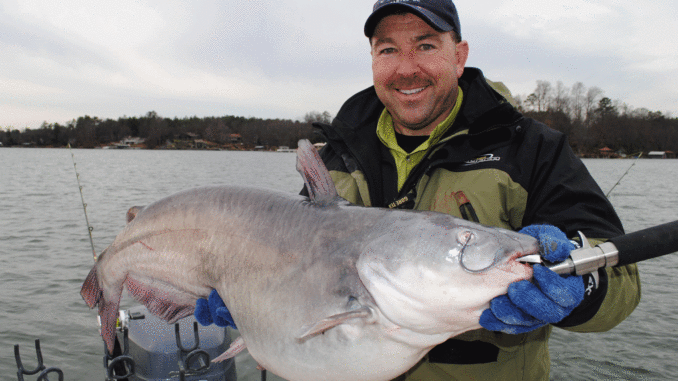
The weather might be cold, but this Duke Power reservoir produces some red-hot fishing for bass, crappie and catfish.
Rarely do fishermen discuss Lake Wylie in the same revered terms used for other reservoirs in the Carolinas: Kerr (Buggs Island), Jordan, Santee Cooper, Clarks Hill.
But the Duke Power impoundment that rests along the North Carolina-South Carolina border on the Catawba River probably deserves better. It’s a great bass fishery, has been a good crappie fishery over the years, and since 2005, it’s rapidly developed into a tremendous fishery for blue catfish.
Guides Jerry Neeley and Chris Nichols of Jerry’s Fishing Guide Service have caught all three species on 13,443-acre Wylie, targeting each in different areas at different times of the year. They’re especially fond of the big blue cats that are starting to be commonplace.
“Wylie has become a great blue catfish fishery,” Neeley said.
“We started really catching blues two winters ago, in 2009,” Nichols said. “Winter seems to bunch ‘em up and make ‘em a lot more predictable. You can go out and catch 15- to 25-pound fish in the winter, and every year, it’s gotten better.”
But winter is not only a great time to catch catfish, it’s also been prime time for bass and crappie. Wylie has long been considered an excellent fishery during the colder months. Crappie numbers are not what they’ve been in recent years – some anglers blame the explosion in the white perch population – but what is lacking in numbers appears to be made up for in the quality of the fish being caught; those 1-pound slabs are fairly common. The bass fishery keeps on cranking out nice fish, and lots of them, even though how they’re being caught has changed somewhat. With the water going from stained to clear over the past half-dozen or so years, a great summertime topwater fishery has developed, but fishermen still catch lots of bass the way they have for years: fishing boat docks, offshore humps, and in the winter, taking advantage of the warm-water discharges from the power plants at the upper and lower ends of the lake.
Neeley and Nichols are sharing a handful of their best spots for each species and how to fish them:
A – Camp Thunderbird diving platform
35 06 264N/81 02 606W
On the western bank of the lake, just downstream from the Buster Boyd Bridge, a big major cove is a great winter and early spring bass spot, according to Nichols.
“Two ditches run back into the coves, one on either side of the diving platform,” Nichols said. “The bass used the ditches to move in from the river.”
The ditches are six to eight feet deep. Nichols likes to fish the flat on the right side of the northern ditch with a crankbait. Later on, a half- to ¾-ounce lipless crankbait like a Hot Spot becomes more effective. A Carolina rig is also a regular producer.
B – Mouth of Boyd’s Cove
35 06 406N/81 02 121W
Another excellent winter bass hotspot is the entrance to Boyd’s Cove, a mile or so downstream from Buster Boyd Bridge on the east side of the lake.
A huge white house occupies the point on the northern side of the cove; it once belonged to a member of the NBA’s Charlotte (now New Orleans) Hornets.
“This is a good place to catch bass from January through March,” Nichols said. “You need to set up in front of the big, shallow flat inside the point. Get on the outside of it and cast parallel until you find the right depth.
“They’ll be anywhere from the cedar trees on the point all the way down the rip-rap.”
Nichols relies on two lures: a No. 7 Shad Rap and a Carolina-rigged lizard.
C – Mouth of Crowders Creek
35 05 234N/81 03 631W
The mouth of Crowders Creek is an excellent wintertime spot to catch blue catfish. Nichols likes to start 500 yards back in the creek and drift out to the river channel.
“Most of the shad will be out of the creek in the winter,” he said. “I like to work the creek channel and the deep flats. The flats will be about 30 to 32 feet deep, and the river channel will be 40 feet deep.”
Neeley likes to drift a spread of six rods, each fitted with Santee drift rigs and 5/0 to 6/0 circle hooks. He uses filets of white perch, bream or small gizzard shad for baits.
“If you want to catch numbers of catfish, the best is to drift,” Nichols said. “The fish will be a little smaller — five to 20 pounds — and we usually don’t catch them in less than 25 feet of water. Anything shallower than that, it’s usually channel cast or bullheads.”
D – Mouth of Mill Creek
35 07 970N/81 03 306W
Neeley likes to start by fishing a run down the right side of this creek for crappie in the winter.
“I like to fish chartreuse, blue, green and bumblebee (colored) grubs on 1/16th-ounce jigheads,” he said. “You throw them back behind the boat and run maybe .5, .6, .7 miles per hour. You’re flat-lining for crappie.
“You start at the point on the right and troll the whole right side, keeping your boat in 20 to 25 feet of water, until you get to the rocky point, then you turn, go across the creek and come back down the other side.”
If you hit a few fish, mark the spot and make sure to circle back across that area on your next go-round.
E – Mouth of Catawba Creek
35 08 702N/81 03 115W
This is the beginning of another trolling run that Neeley makes for crappie in the winter. He likes February and March better than January, but said he’ll check it anytime between December and March if he’s on the water with slabs on his mind.
“I start out at the point on the right and troll the right side to the buoy marker in front of the bridge,” Neeley said. “Then, I come back up the right side.
“There is a South Carolina fishing sign, and there will usually be some crappie around it.”
Neeley likes to flat-line troll with his usual spread of six rods with tiny jigs and grubs. “I think you can control the baits better,” he said.
F – Lower Amstrong Bridge
35 09 963N/81 02 240W
Heading up the South Fork River, Nichols takes advantage of the warmer water being flushed through Duke Power’s Allen Steam Plant and its hot-water discharge to target winter bass in spring conditions.
“It’s a mile to the Hot Hole, but the water can be five degrees warmer here than out in the lake,” Nichols said. “Fish will position themselves behind the bridge pilings, on the downcurrent side of the pilings.”
Nichols uses a quarter-ounce Shaky head jig with a finesse worm, and he’s partial to one with a chartreuse tail. His other main weapon is a 4-inch chartreuse grub on a quarter-ounce jighead. He’ll also fish a finesse worm or grub on a drop-shot rig.
G – Left Bank South Fork River
35 09 961N/81 02 397w
Neeley has caught a lot of big crappie on this bank, “a lot of 2-pounders,” he said.
On the left bank of the river above the Lower Armstrong Bridge, Neeley puts out his flat-lining rig and makes a relatively short run — but a productive one.
“I’ll flat-line troll for crappie up the whole left bank,” he said. “I start at a big house with double boat docks and go all the way to the point, then come back. It’s a short troll, but I’ve caught a lot of big crappie here.”
H – Cedar Point Hump
35 10 272N/81 02 484W
Several hundred yards farther up the river on the same bank, Nichols likes this spot to anchor up and fish for catfish.
“There’s a hump off the cedar points; there’s 18 feet of water on the top,” he said. “I like to anchor on top of it and fan-cast six to eight rods all around the back of the boat. I’ll have some of them on top of the hump, some behind me toward the creek channel, some toward the bank.
“You want to fish when they’re pulling water; when they’re pulling water through the steam plant into the South Fork, the fish bite real good.”
Nichols said that fishing big chunks of cut bait — bream, shad, crappie or perch — because you’re fishing for five or six big bites per trip.
I – Allen Steam Station
35 11 404N/81 00 343W
Neeley likes to drift the bank in the main river in front of the steam station for big blue catfish.
“A lot of blue cats stay in the river all the time,” he said. “The water up in the river is not quite as deep. This isn’t a real deep hole; most of the fish will be 25 to 28 feet deep, but it’s a good hole to drift.”
Neeley drifts with a Santee rig and filets of perch, bream or shad.
Jerry Neeley can be reached at 704-678-1043; Chris Nichols can be reached at 704-868-2298. Also, see www.carolinasfishing.com.

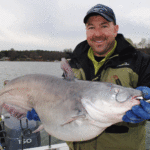
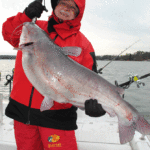
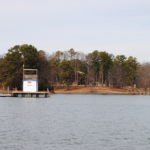
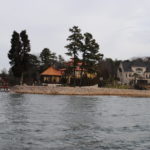
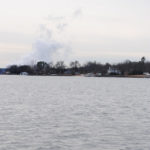
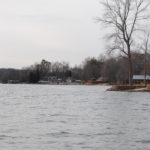
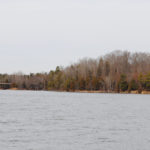
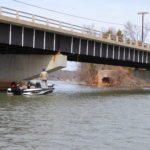
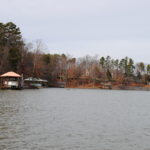
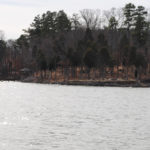


Be the first to comment